|
Getting your Trinity Audio player ready...
|
No matter your business, you need a steady flow of new prospects for a steady revenue stream. Prospecting is time-intensive and challenging, but it’s an essential part of the sales process.
Sales prospecting helps you identify new sales opportunities and convert prospects into customers. But how do you go about getting those prospects in the first place?
In this post, you’ll learn how to set up a prospecting plan for your business. By the end, you’ll have a customizable prospecting strategy that you can implement immediately.
But first, let’s take a step back and understand the basics of prospecting!
What Is a Prospecting Plan?
A prospecting plan is a systematic process for generating new leads. It’s a way to identify and contact potential customers interested in your product or service. B2B sales strategies often include some form of prospecting.
While sales teams use a prospecting plan, it can benefit any business that relies on customer acquisition. For example, recruiters can also use these prospecting tips to find new candidates.
Plus, you might want to use a sales prospecting plan to find new clients as a consultant or freelancer. And, if you’re a real estate agent, you could use a prospecting plan to find new leads.
What Is the Prospecting Process?
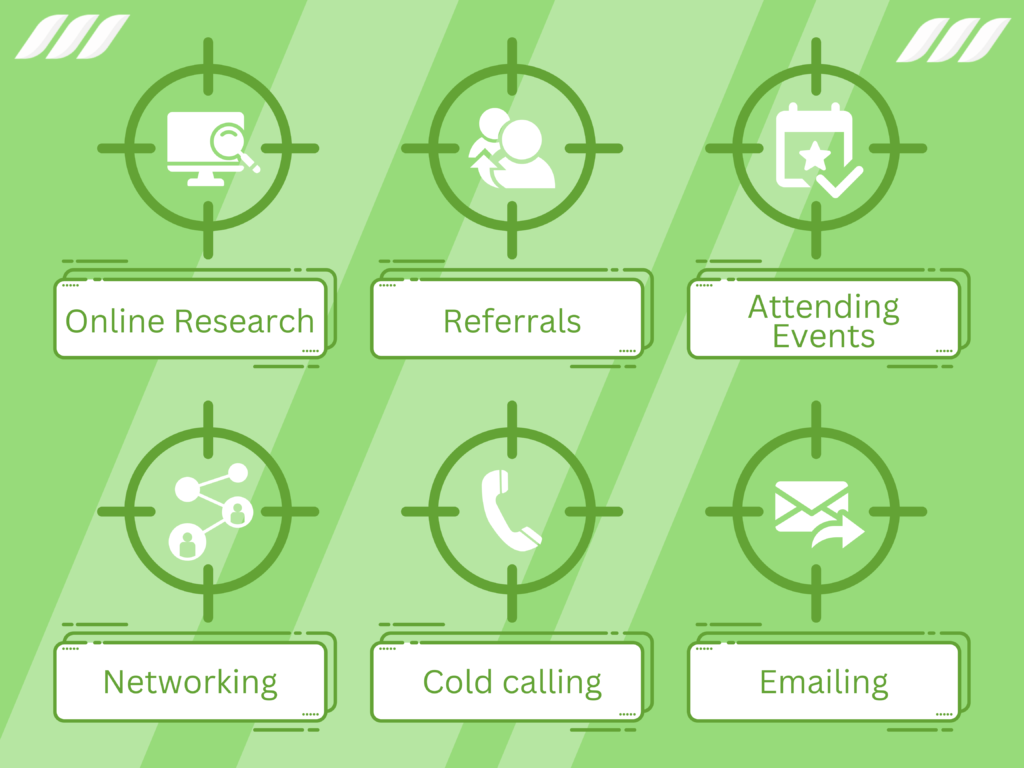
The sales prospecting process involves identifying, reaching out to, and establishing relationships with potential customers. It’s different from lead generation, which is simply identifying potential customers.
Sales prospecting requires you to go beyond just identifying potential customers and try to find them, talk with them, and build a relationship with them.
In other words, the prospecting process helps salespeople build a pipeline of potential clients. These are people who have indicated some kind of interest in what you have to offer, which makes them more receptive than other leads.
The whole point of prospecting is to make it easier for sales reps to reach out to potential customers quickly and as often as possible. This can involve various activities, such as cold calling, emailing, and meeting potential customers.
Prospecting can be done in many ways, including:
- Online research
- Referrals
- Attending events
- Networking
- Cold calling
- Emailing
And the list goes. Jim Brodo, with over 25 years of experience in marketing, training, and development, explains the prospecting process with the help of the 5 Ps; purpose, preparation, personalization, perseverance, and practice.
1. Purpose
This stage in the prospecting process involves:
- Identifying the right target
- Creating messaging that matters
- Positioning the value of the solution
It’s important to remember that not all prospects are the same, so you need to focus your time and energy on those most likely to buy your product or service.
It starts with understanding the customer’s needs and designing a campaign that speaks to those needs. It’s also important to remember that most buyers don’t make decisions in a vacuum.
Your prospects need to justify the purchase to their boss or team, so your sales materials should clearly articulate the solution’s value and how it will help customers achieve their goals.
You must also clearly define why your potential customers should choose your product or service. The more relevant and targeted your messaging is, the more likely you are to close a deal.
2. Preparation
The preparation stage of prospecting helps ensure that the sales professional is prepared for any potential interaction with a potential customer. This includes knowing the customer’s name, company, and product or service.
Preparation also helps you convince and provide value or insight to the potential customer. It allows you to build good terms with potential customers and build trust to outperform your competitors.
3. Personalization
Prospects can smell a sales pitch from a mile away. And if you’re not personalizing your approach, you can be sure they’ll tune you out. Generic emails sent to a large group of people are one of the quickest ways to turn off potential customers.
As such, the right email personalization strategy is key when it comes to nurturing prospects. Take the time to learn more about your potential customers and customize your pitch to their needs, interests, and preferences. This will help you stand out from the competition and increase your chances of converting leads into customers.
4. Perseverance
It takes a lot of perseverance to be successful in prospecting. In fact, it takes an average of eight touches to start a conversation with a prospect. That’s a lot of work, and it can be discouraging when you don’t get a response.
However, you have to keep going. Perseverance is the key to reaching and building relationships with your prospects. And one way to keep persevering is to set goals for yourself.
For example, set a goal to reach out to 10 new prospects daily or contact 50 prospects over a week. Having a goal will help keep you motivated and give you a sense of accomplishment when you reach it.
Another way to persevere is to ensure you’re providing value to your prospects. You can research their industry or company and send them relevant, helpful content.
And finally, don’t give up if you don’t get a response right away. Sometimes it takes time for someone to review your message and decide whether or not they want to respond. Keep reaching out, and eventually, you’ll get through.
5. Practice
Sales professionals must practice their skills to be successful. This is especially true regarding prospecting, a process you can improve through practice. You might want to hone your skills through business simulations, role-playing, and AI-powered training bots.
Business simulations allow you to create and handle different scenarios and challenges in your work. It can help your sales team improve the prospecting process and decision-making skills.
In the role-playing simulation, marketers take on different roles and interact with each other in a virtual setting. This can help them to develop their communication and negotiation skills.
And AI-powered training bots help sales professionals practice their skills. These bots can simulate different customer interactions, allowing you to practice their responses.

The Goal of Prospecting
By now, you know that prospecting involves identifying your target audience, determining their needs or wants, and finding the best way to reach them.
It is one of the most challenging aspects of any sales role, but it’s also an essential and beneficial one. Without new leads coming in regularly, you’ll run out of potential customers sooner rather than later.
With that in mind, what exactly is the goal of sales prospecting? Essentially, it’s to uncover hidden prospects so you can call and visit them to pitch your product or service. The more potential customers you find, the easier it will be for you to initiate sales prospecting.
While prospecting may look straightforward to some people, it’s a time-consuming process. But the benefits are worth it because it helps you find new customers interested in your product or service. Prospecting can bring in a sustainable, long-term revenue stream for your business.
What Is a Prospecting Strategy?
A prospecting strategy is a plan that helps you find and contact potential customers. Your prospecting strategy should answer the following questions:
- Who is your target audience?
- How are you going to reach them?
- What message are you going to send them?
- What’s the best time to reach them?
The prospecting strategy differs for each business, depending on the target audiences, industry, and products or services. But there are some general best practices that you can follow to create a successful prospecting strategy.
How to Set up a Prospecting Strategy
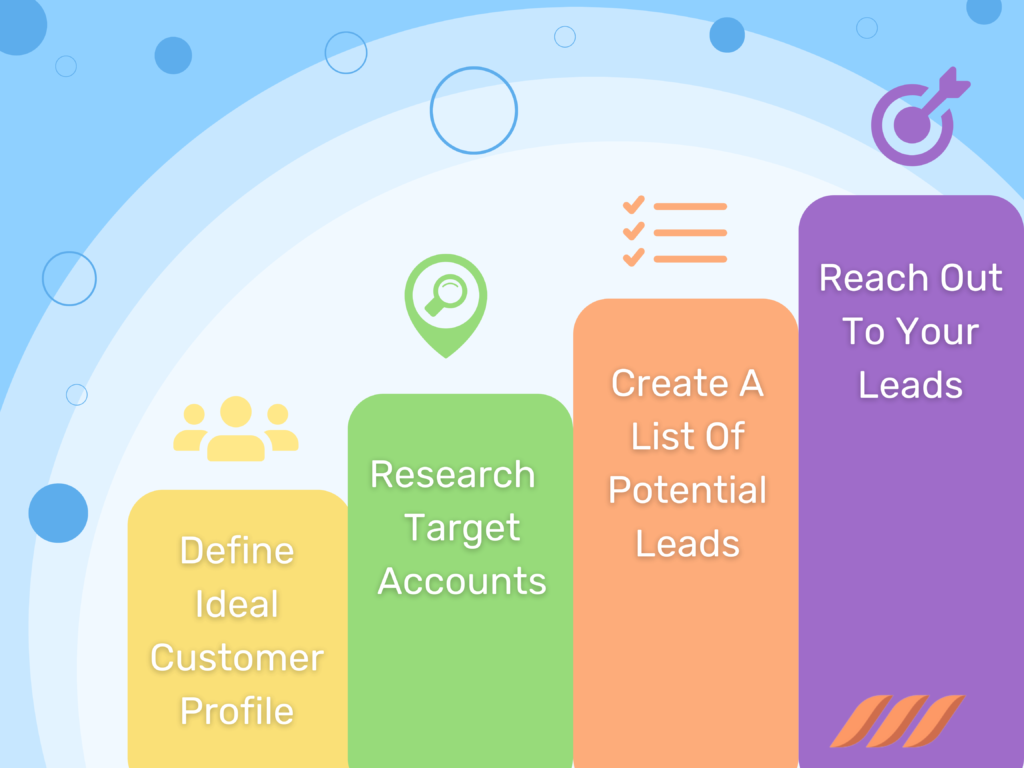

As a marketer, you know that generating high-quality leads is vital to your company’s success. You also know that prospecting is one of the best ways to generate leads.
But what if you don’t have much time on your hands? Is it still possible to set up an effective prospecting strategy quickly? The answer is yes!
With some planning and creative thinking, you can set up a prospecting strategy to help you quickly generate leads.
Here are five tips to help you get started to make the process easier.
a. Define Your Ideal Customer Profile
The first step in any good prospecting strategy is defining your ideal customer profile (ICP). Who are you trying to reach with your marketing? What are their demographics? What are their pain points?
Answering these questions will help you stay focused and ensure you’re targeting the right people with the right message.
b. Research Your Target Accounts
Once you know who you’re targeting, it’s time to start researching your target accounts. This step is vital because it will help you determine which companies are most likely to be interested in your products or services. Be sure to look for companies that match your ICP and need your product or service.
c. Create a List of Potential Leads
Now that you know who you’re targeting and have researched potential accounts, it’s time to create a list of potential leads. To do this, start by creating a spreadsheet with three columns:
- Company Name
- Contact Name
- And Email Address.
Next, start populating the spreadsheet with the information you gathered in steps one and two.
d. Reach Out to Your Leads
When reaching out to your leads, it’s important to personalize each message so that it doesn’t sound like a generic sales pitch. In addition, be sure to include a compelling reason for them to want to learn more about your products or services.
Finally, don’t forget to include a call-to-action (CTA) so they know the next step.


What Are the Prospecting Methods?
Sales reps can use many different methods to improve their prospecting efforts and get more potential customers. The key is to find the right balance between all these methods so that you don’t do anything too much or too little.
Here are some of the more popular prospecting methods:
1. Create a Customer Persona
The first step in prospecting is to create profiles of your buyer persona. These profiles should include demographic information, interests, and buying habits. By understanding your ideal customers, you can focus your efforts on reaching them.
2. Warm Calling
Warm calls are emails or LinkedIn messages to prospects who have already shown an interest in your products or services. This type of prospecting is more effective than cold calling because the prospect is already familiar with your company and may be more likely to buy from you.
Here’s an example of an email template you can use:
Hi [name],
I was doing some research on [industry] and came across your company. I noticed that you might be facing [challenge] and thought our product/service could help.
I wanted to invite you to schedule a call with me so that I can learn more about your needs and see if there might be a fit.
Would Monday 10 AM work for you? If not, please let me know what times would work better for you next week.
Thank You! CTA: Schedule A Call With Me Now
3. Personalized Email Marketing
Personalized emails are a great way to reach potential customers. By addressing the recipient by name and including relevant information, you can increase the chances that they will read your email and respond positively to your offer.
Related article: Best Email Marketing Automation Tools
4. Hunt Prospects on LinkedIn
It’s no secret that LinkedIn is an excellent social media platform for B2B sales prospecting. It allows you to target specific prospects based on their job titles, industry, and other factors. Not to mention that you can also send customized messages to your potential customers through LinkedIn, encouraging them to learn more about your products or services.
Don’t want to spend more time doing repetitive tasks on LinkedIn? Consider getting a LinkedIn automation tool like Dripify that lets you put LinkedIn prospecting and lead generation on autopilot.
With Dripify LinkedIn automation tool, you can automate profile visits, connection requests, and messaging. This allows you to spend more time interacting with customers and leads instead of performing redundant LinkedIn activities.
Related article: Best Prospecting Tools for Business
5. Attend Relevant Events
Events are a great way to meet potential customers face-to-face and build relationships. Make sure to attend as many relevant events as possible to meet more prospects and build personal relationships with them that you can capitalize on immediately or in the future.
6. Don’t Hesitate to Ask for Referrals
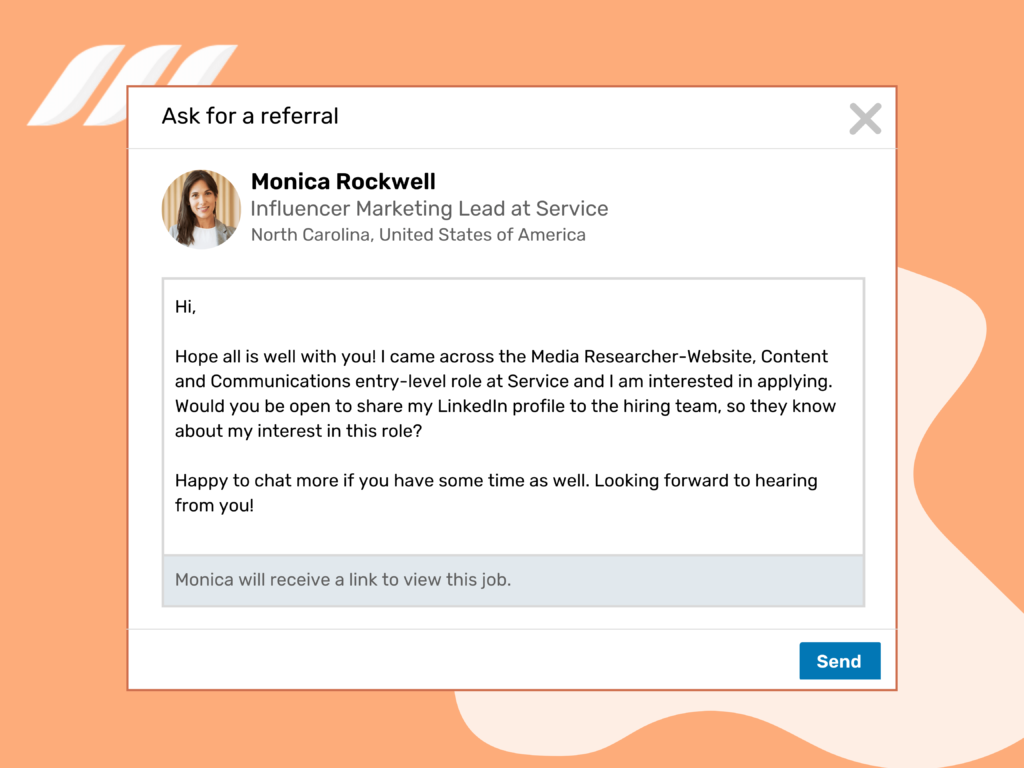

One of the best ways to find qualified prospects is to ask for referrals from current customers or contacts. When someone recommends your products or services to someone else, it increases the likelihood they will buy from you.
7. Partner for Co-Selling
Co-selling partnerships can be a great way to find new leads and expand your reach into new markets. By partnering with another company that sells complementary products or services, you can reach new prospects who may not have been aware of your business before.
8. Keep Track of Your Progress
The final step in setting up a prospecting strategy is to track your progress. By keeping track of the number of leads you generate, the number of appointments you set, and the number of sales you make, you can gauge the effectiveness of your strategy and make adjustments as necessary.
5 Steps to Create a Prospecting Plan
A strategic prospecting plan should include these steps:
1. Define your target customer
2. Research your prospects
3. Choose the best methods to reach your prospects
4. Set up a drip campaign or sequence
5. Automate and measure your results
1. Define Your Target Customer


The first step in creating a prospecting plan is to define your target customer. Who are you trying to reach with your marketing messages?
You can define your target customer by:
- Location
- Industry
- Company size
- Job title
- Persona
Before targeting your potential customers, it is vital to understand their needs and problems. You must follow these 4 basic steps to understand and fulfill their needs.
Identify: Conduct customer needs analysis through surveys, interviews, focus groups, social listening, and more.
Distribute: Share your customer’s needs with your team so they are on the same page. You can brainstorm on what works best for you.
Create: After you have gathered this information, it’s time to analyze and make decisions. That means you need to create products and services accordingly.
Collect: Based on what you learned from your analysis, take action to improve your products or services. For example, you can collect feedback from your customers.
Once you’ve defined your target customer, you can move on to the next step.
2. Research Your Prospects
Now that you know your target customer, it’s time to research them. This step is important because you need to know as much as possible about your prospect before you start reaching out to them.
Your research should include:
- Demographics
- Company information
- Industry trends
You can sleuth on social media, the internet, and even talk to people in your target market.
What’s more? You may want to check your potential customers’ past interactions and purchase history. This will help you understand your target customer as much as possible. Also, it is a good idea to find prospects that are similar to your existing customers. That will give you an idea of what to expect and how to reach them best.
Finally, industry research will help you understand the trends that your prospects are interested in.
The more you know about your prospects, the better equipped you’ll be to sell to them.
3. Choose the Best Methods to Reach Your Prospects
Now that you know your target customer and what they’re interested in, it’s time to choose the best methods to reach them. You must identify the ways to get in touch with them that will be the most effective.
There are different channels you can use to reach your prospects:
- Social media
- Advertising
- Direct email
- Events
- Content marketing
There’s more. You’ll need to experiment to determine which methods work best for your business. But, as a general rule, you should use a mix of channels to reach your prospects.
For example, you can use email to send them information about your products or services. Then, you can use social media to build relationships with them. And finally, you can use advertising to drive your prospects to your website.
Remember that the best way to reach your prospects depends on your target customer profile and your product or service. That leads us to start a drip campaign.
4. Set Up a Drip Campaign or Sequence
Once you’ve chosen the best methods to reach your prospects, it’s time to set up a drip campaign or sequence. But what’s a drip campaign?
A drip campaign is a series of automated messages sent to your prospects over time. It’s an effective way to nurture your prospects and turn them into customers. Using a drip campaign, you can start interacting with your prospects without being too salesy.
Here’s how to start a drip campaign:
- First, you need to choose the right platform. There are many drip campaign platforms that you can use, such as Dripify, HubSpot, Marketo, or Pardot.
- Next, create your drip campaign; write your messages, choose your schedule, and set up triggers.
- Test your drip campaign to ensure it’s working properly.
- Run the drip campaign.
- Finally, monitor your results to improve your campaign over time.
The step to keep improving your drip campaigns is continuous. Drip campaigns can turn your prospects into customers quickly. But, like anything else, they’re not perfect. You’ll need to experiment to determine what works best for your business.
Related article: Best Email Drip Campaign Examples
And don’t just focus on email marketing campaigns; consider other drip campaigns, such as social media and direct mail drip campaigns. You can also target customers based on pixels on your website.
5. Measure Your Results
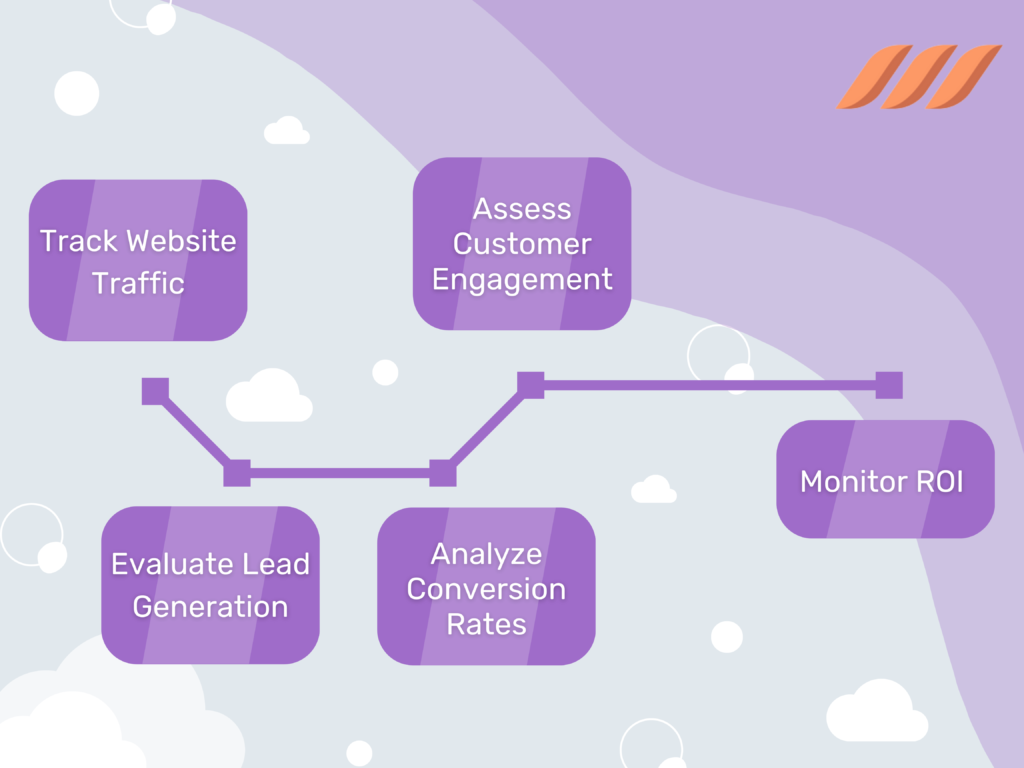

It can be difficult to determine what is and isn’t working without knowing how well your marketing efforts are performing. That’s why it’s important to measure your marketing results regularly.
By doing so, you can identify which tactics are effective and which need improvement. Let us share a few tips for measuring your marketing results effectively.
a. Track Website Traffic
One of the easiest ways to measure your marketing results is to track website traffic. You can do this with Google Analytics or another tracking tool. By tracking website traffic, you can see which marketing channels are driving the most visitors to your site.
b. Evaluate Lead Generation
Next, always monitor your lead generation campaign. Make sure to track the number of leads generated from each marketing channel. This will help you determine which channels are most effective at generating leads.
c. Analyze Conversion Rates
You must track conversion rates to measure the effectiveness of your marketing efforts. You can do this by tracking the number of people who visit your website and then convert into leads or customers. Determining which marketing channels drive the most conversions is also a good idea.
d. Assess Customer Engagement
Customer engagement evaluation is also key to determining the success of your campaign. Make sure to track key metrics like heatmaps, page visits, time on site, and social media shares. This will give you a better understanding of your audience’s engagement with your content.
e. Monitor ROI
And finally, you should keep an eye on one of the most important metrics, ROI or return on investment.
To calculate ROI, simply divide the net income generated by your campaign by the total cost of the campaign multiplied by 100.
This will give you a percentage that indicates how well your marketing efforts are going. You should review your results regularly and tweak or improve your prospecting plan as needed.
It is a good idea to create and use a prospecting plan template for your campaigns. Doing so can save you time because many of the prospecting activities are repetitive.
What Is the Prospecting Cost?
The prospecting cost is the amount of money it costs to identify areas that may be worth exploring for sales opportunities or acquiring new customers.
Prospecting for new sales opportunities often involves a significant upfront investment. The cost of sales prospecting is, therefore, one of the main considerations when determining your sales strategy in any given market.
What Is the Typical Cost Per Lead?
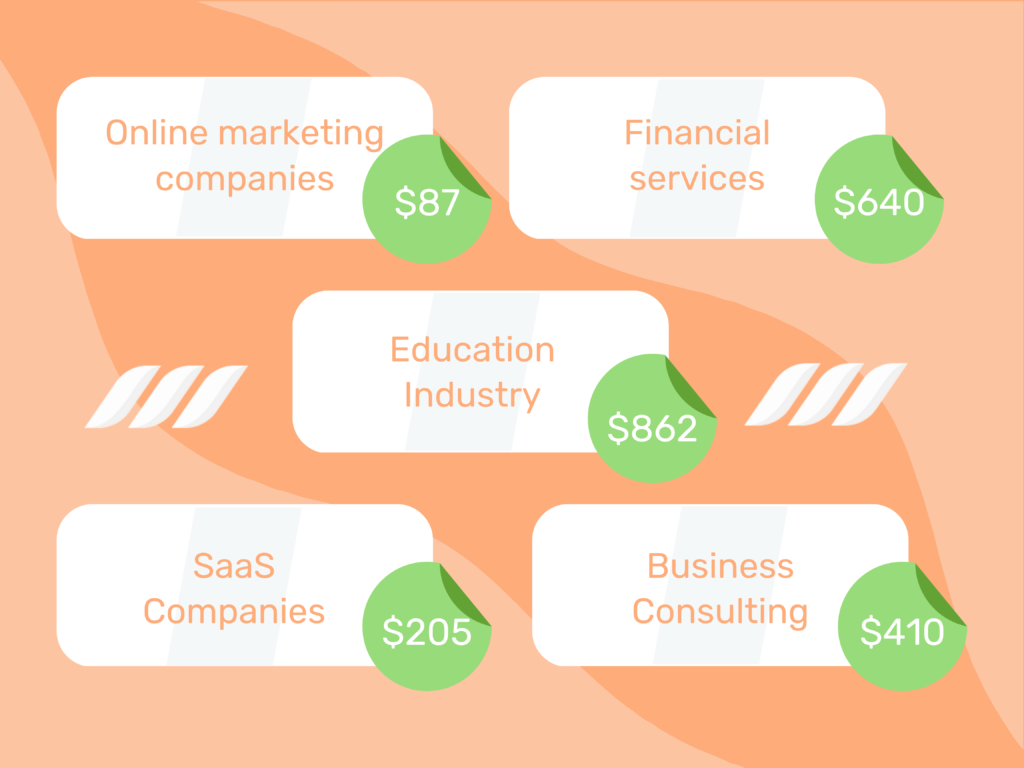

The typical lead cost varies widely depending on the industry, product, or service. For example, a lead for a B2B product or service may cost $100 or more, while a lead for a B2C product or service may cost $10 or less.
To give you a clear idea, cold prospecting may cost you 50% of your deals. The average cost per new customer acquired depends on the type of company. Let us give you a few examples now:
- Online marketing companies: $87
- Financial services: $640
- Education Industry: $862
- SaaS Companies: $205
- Business Consulting: $410
Remember that these numbers will change based on the specific company, their industry, and other factors. However, they give you a good idea of how much it costs to acquire a new customer.



Conclusion
Prospecting is a crucial part of any sales and marketing strategy. Prospecting also has an outsized impact on a company’s bottom line. As such, it’s important to take the time to create a well-researched and effective sales prospecting plan for your business. A prospecting plan is best used by sales professionals to generate more leads and convert them into customers.
Remember that sales prospecting can be time-consuming and challenging – and not everyone you reach out to will want to buy your product or service. But by using this post as a guide to developing your sales prospecting strategy, you can increase your effectiveness and efficiency as much as possible.
![Create a Prospecting Plan [+8 Prospecting Methods] Create a Prospecting Plan [+8 Prospecting Methods]](https://dripify.io/wp-content/uploads/2022/11/11.png)
![How to Write a Price Increase Letter [Tips, Examples, and Free Template]](https://dripify.io/wp-content/uploads/2021/12/27.png)
![How to Write an Effective Collaboration Email [+Templates]](https://dripify.io/wp-content/uploads/2023/05/13.png)



